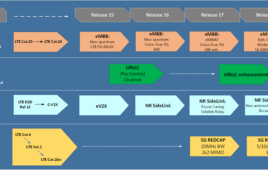Private v. public, virtual v. real have converged in a world saturated by information technology. It seems impossible to divide the public from the personal. But when and where do we choose to share information about ourselves? How do we perceive public space and virtual space? And how do these perceptions influence our practices of seeing and being seen?
A Tel Aviv University study recently published in Urban Studies argues that “dynamic visibility,” in which technological surveillance is combined with personal information volunteered by individuals online, has led to diminished overall privacy. “Technology is not only used top-down but also bottom-up, with individuals using their own technological devices to share and enhance their visibility in space,” said Dr. Tali Hatuka, Head of the Laboratory for Contemporary Urban Design at TAU’s Department of Geography and Human Environment.
“Whenever we use ‘location-aware’ devices, or tap on Waze or dating apps, like Tinder, or check-in on Facebook, we are really diminishing our own privacy,” Dr. Hatuka said.
“This combination of secret surveillance and voluntary sharing contributes to a sense of ‘being exposed’ in a public space that normalizes practices of sharing personal data by individuals,” Dr. Hatuka continued. “The result is diminished overall privacy.”
Dr. Hatuka co-authored the study with Dr. Eran Toch, co-director of the Interacting with Technology Lab of the Department of Industrial Engineering at TAU’s Faculty of Engineering.
Using “Smart-Spaces” to measure sharing
A survey conducted in 2013 by Google and Ipsos MediaCT in dozens of countries found that the Israeli population had the world’s highest smartphone saturation (57%) and some of the highest rates of mobile internet usage and mobile email usage. The new TAU study found some differences among sharing preferences in different types of spaces, but these paled in comparison to the overwhelming willingness of participants to share their locations with their social networks.
The researchers developed an Android application called Smart-Spaces to collect information for the study. The app combines smartphone-based surveys with the online tracking of locations and phone application usage. The Smart-Spaces application was installed for 20 days on the phones of TAU students, who answered context-based surveys in the course of their daily routines. Each participant was interviewed before and after the installation of Smart-Spaces.
“More than 73% of the participants shared their locations as they answered the surveys,” said Dr. Hatuka. “Moreover, there was a correlation between the kind of space they were in — private home, library, street, square etc. — and their willingness to provide information, with a higher willingness to share location and other information when the subject was in public spaces.”
The results were analysed according to different activities, locations and number of people present at the time.
A look to the future
“While the sample is not representative of the general population, our results can be considered predictors for future phenomena,” Dr. Hatuka observed. “Students are early adopters of smartphone technology, and their practices may predict those of the more general population.”
The researchers are continuing to study the link between smartphones, urban space and social behavior to develop a comprehensive picture of current practices and produce concrete suggestions of how to approach emerging challenges.
“Our next objective is to understand what we actually see among an overload of images in an age of digital information,” Dr. Hatuka concluded. “We assume that we are less sensitive to our physical environment — that is obvious. But the question is: What do we actually notice?”




